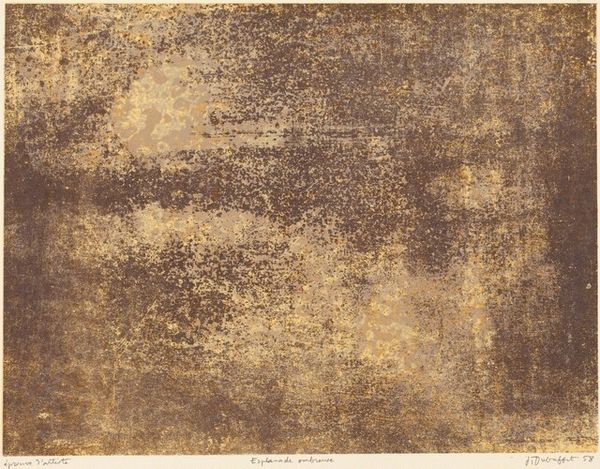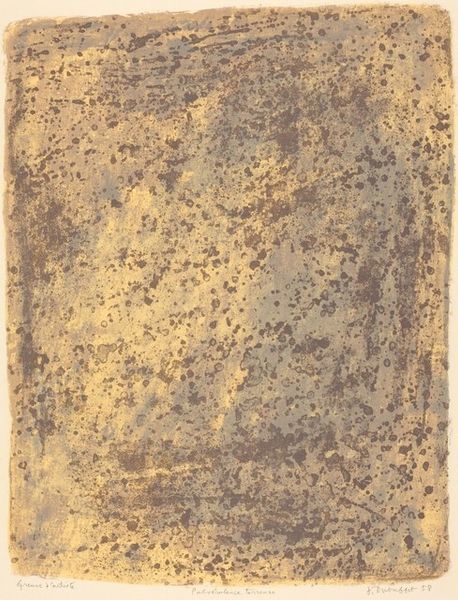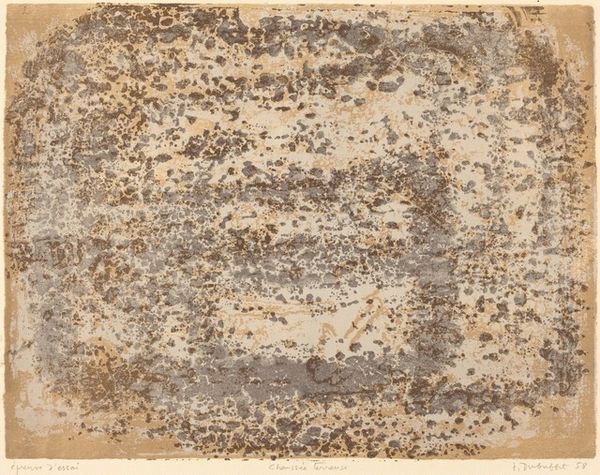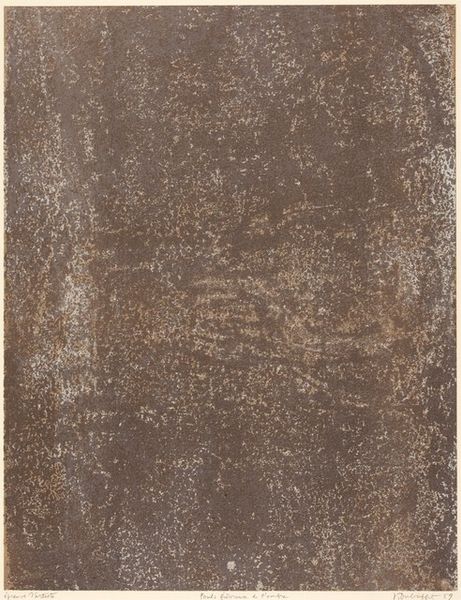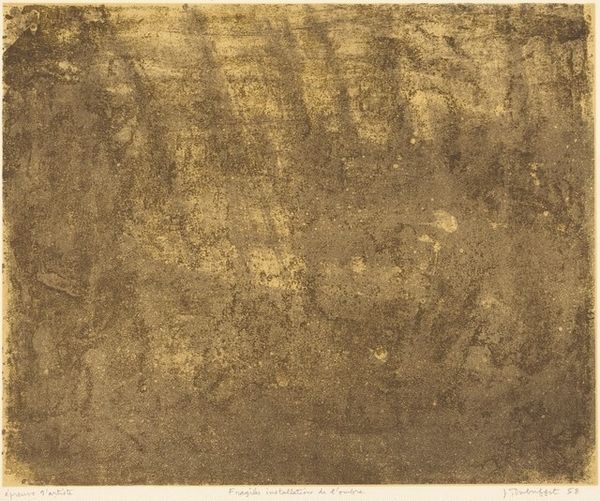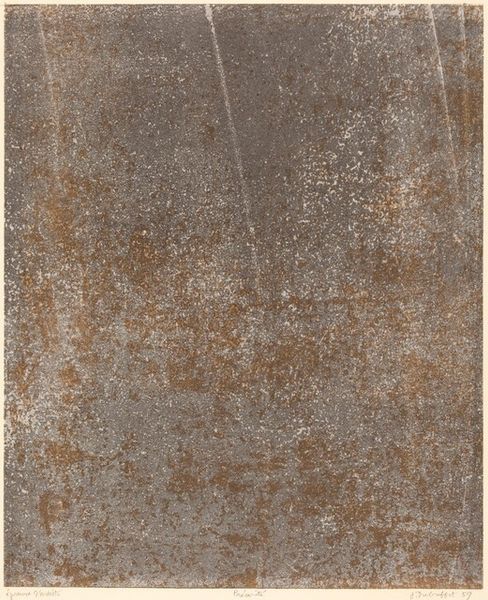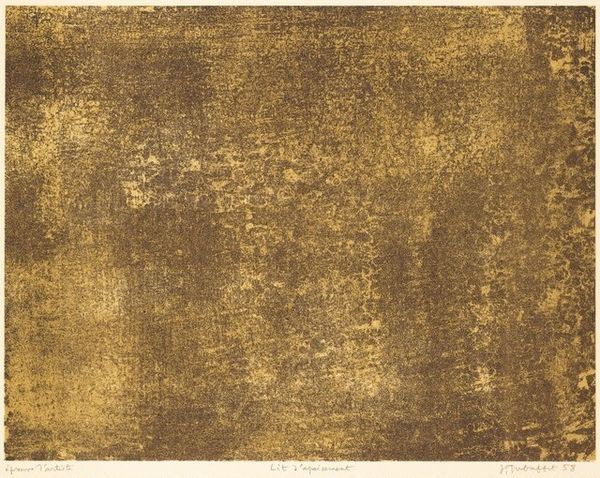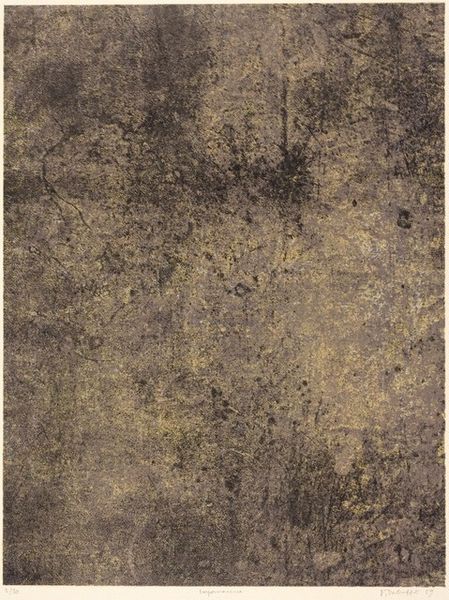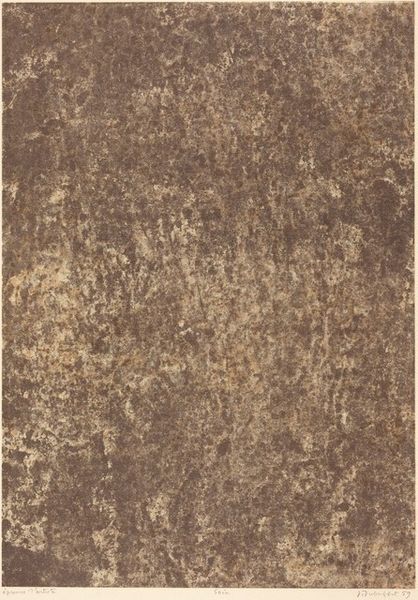
lithograph, print
#
abstract-expressionism
#
organic
#
lithograph
# print
#
organic pattern
#
watercolor
#
monochrome
Copyright: National Gallery of Art: CC0 1.0
Curator: Well, hello there! This print absolutely vibrates with the energy of Jean Dubuffet. It’s called "Jeux d'ombre," created in 1958. What’s your first impression? Editor: I'm struck by how… oppressive it feels. Like staring into a brown fog that threatens to envelop everything. Curator: Oppressive, huh? I feel something more ambiguous. It reminds me of landscapes, and yet it's clearly abstract. Do you think that's intentional, this kind of landscape-that-isn't-quite-a-landscape? Editor: Dubuffet emerged after the Second World War, a period marked by deep-seated disillusionment and social upheaval. The density and monochrome palette could mirror that sense of despair. Abstraction as a way to avoid direct representation, perhaps? Curator: Exactly! It feels to me like the imprint of something traumatic—memories clinging to consciousness, almost but not quite making sense. He moved away from the conventional "beauty" and I wonder, was this maybe his protest? Editor: Absolutely, against academic tradition and also societal norms. The "shadow play," jeux d'ombre in French, is fitting. What's concealed versus revealed? In whose shadows are we standing? How does the establishment participate in hiding truth, creating shadows? Curator: True. And look at the texture he achieves with lithography! A chaotic jumble, like the stuff of the subconscious made visible. Raw, almost violent, wouldn’t you say? I almost see bodies and faces but as fragmented visions, phantasms, afterimages... Editor: Indeed, he seems to confront conventional understandings of beauty by centering a brutalist aesthetic—making viewers uneasy by portraying an aesthetic of refuse, of discarded matter. And while appearing chaotic, that feeling actually reflects a meticulous layering of meaning. Curator: Layering that invites us to confront, as he often did, the raw, unfiltered realities of existence and question all preconceived notions of art and culture. A bit much, don’t you think? Editor: Maybe! Still, Dubuffet challenges us, even now, to reflect on our own relationship to societal shadows. What a call to action. Curator: Yes, definitely food for thought in contemplating how he blurred the line between art and life, in such an unsettling and powerful way.
Comments
No comments
Be the first to comment and join the conversation on the ultimate creative platform.
